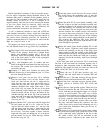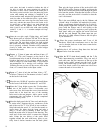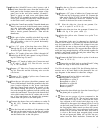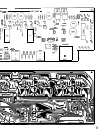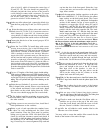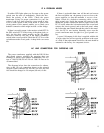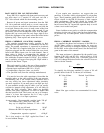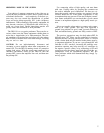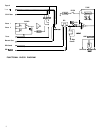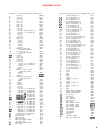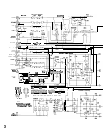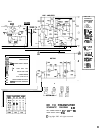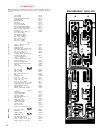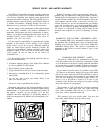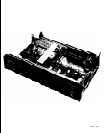MINIMIZING NOISE IN THE SYSTEM
Your choice of separate components is the right way to
secure the best performance from a music system, but the
wide-band
characteristics
and complexity of the best sys-
tems may also not conceal the introduction of ground
loops and noise pickup-especially
RFI
(radio frequency
interference). With exceedingly high quality equipment we
may become conscious of distractions that would be ig-
nored on a lesser level. Careful interwiring practice will
greatly reduce the likelihood of such problems.
The DH-110 is a very quiet preformer. There can be oc-
casions where even the finest equipment exhibits hum or
noise due to irregularities in its interconnection. The sim-
ple expedient of reversing line cord plugs will often reduce
hum. Listen to the hum level after each change, reversing
only one cord at a time.
CAUTION: Do not indiscriminately disconnect and
reconnect a power amplifier when other components
are
turned ON. Use the DH-110 muting circuit for protection
against loud noises. With the power amp connected to a
switched convenience outlet on the DH-110, turn the
preamp OFF, reverse the amplifier line cord, and then turn
the preamp ON.
Use connecting cables of high quality, and treat them
with care. Unplug cables by grasping the connector-not
the cord-to maintain good connections. We have no evi-
dence that special connector platings are required, but the
surfaces should be
free
from grease, fingerprints, or any
contaminate that may prevent a firm and complete connec-
tion. Some audiophiles are convinced that a good contact
cleaner is an important adjunct to a high quality music sys-
tem.
It does not usually reduce noise to connect each compo-
nent to an ‘earth’ ground. This may even aggravate a
ground loop problem, for good ‘earth’ grounds are hard to
find, and unsatisfactory grounds are likely carriers of RFI.
The previous suggestions may also help reduce RFI. In
difficult cases,
RFI
filters can be purchased for insertion
between the line cord plug and the wall outlet, or a device
called a ferrite bead may be installed in the phono stage by
a competent technician. If you use a pre-preamplifier and
find that it is
RF1
sensitive, increasing the cartridge com-
pensation capacitor may help (moving coil cartridges do
not require a specific value), or try connecting a 0.01 mfd
capacitor across the phono input jack that feeds the
pre-
preamplifier. Even for experienced engineers,
RFI
pre-
sents problems which often demand that they simply
‘try
and try again’.
17



